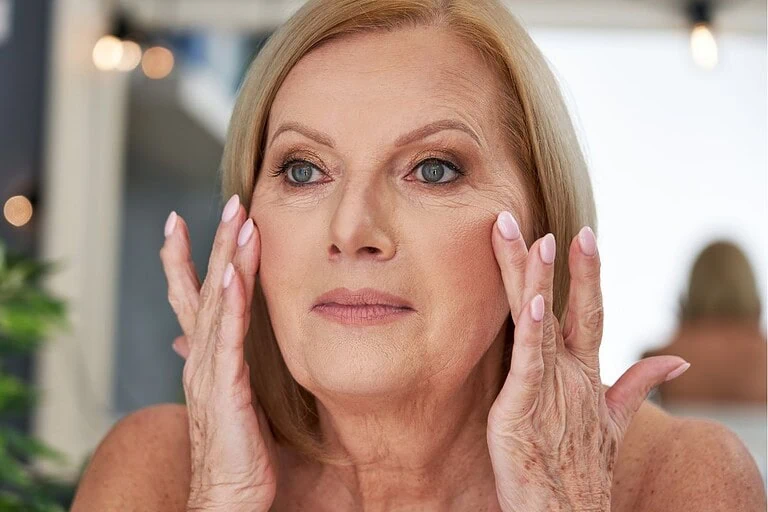
What is a Papule Acne, and How to Treat It?
Acne comes in various forms, and one of the most common types is papule acne. These are bumps that form under the skin, making them more challenging to treat than typical acne with visible heads. In this article, we’ll explore what papule acne is, what causes it, the different types, and how to effectively treat it.
What Is Papule Acne?
Papule acne (or “acne papules”) is a type of acne that forms as raised, solid bumps beneath the skin’s surface. These bumps can range in size and may be red or inflamed, often causing discomfort or pain. Unlike other forms of acne, papules don’t have a visible white or black head, making them harder to treat. These acne lesions can be either inflammatory or non-inflammatory in nature.
What Causes Papule Acne?
Several factors contribute to the development of papule acne, including:
- Bacteria: The skin harbors a bacteria called Cutibacterium acnes. When this bacteria grows and multiplies, it can contribute to various types of acne, including papules.
- Clogged Pores: When dead skin cells, dirt, or excess oils block the pores, it leads to acne formation. This is a common cause of papule acne.
- Overactive Sebaceous Glands: Excess oil production by sebaceous glands can clog the pores, contributing to papule acne.
- Hormonal Changes: Fluctuations in hormones, often due to stress or hormonal imbalances, can stimulate the sebaceous glands to produce more oil, leading to acne.
- Lifestyle Factors: Poor skin hygiene, exposure to pollutants, a diet high in sugar or fatty foods, inadequate sleep, and stress can all increase the risk of developing papule acne.
Different Types of Papule Acne
Papule acne can be categorized into two types: non-inflammatory and inflammatory.
Non-Inflammatory Papule Acne
These papules are usually not red or painful. You may notice solid, raised bumps on the skin that can be annoying but don’t cause much discomfort. Whiteheads fall into this category as the pimples form beneath the skin’s surface but don’t exhibit noticeable inflammation. If untreated, non-inflammatory papules may evolve into more severe acne forms like cysts or nodules.
Inflammatory Papule Acne
Inflammatory papules present as red, swollen bumps on the skin and can be painful to touch. There are several subtypes:
- Nodules: These are larger, firm bumps beneath the skin. They may not break open but are sore and usually cause discomfort.
- Cystic Acne: This severe form of acne involves large, painful cysts that are often deeply embedded in the skin. If untreated, cysts can leave scarring.
How to Treat Papule Acne
Treating papule acne requires a combination of at-home remedies and professional treatments:
At-Home Remedies
- Cleansing: Always wash your face with a mild cleanser to keep your skin free of dirt and oil.
- Topical Treatments: Use products with Salicylic Acid, Retinol, or Benzoyl Peroxide to reduce inflammation and prevent new breakouts.
- Moisturize: Even if you have acne, it’s essential to use an oil-free moisturizer to keep the skin hydrated.
Medical Treatments
- Topical Steroids: For inflammatory papules, corticosteroid creams or gels can help reduce swelling and redness.
- Oral Antibiotics: In more severe cases, oral antibiotics may be prescribed to kill bacteria and reduce inflammation.
- Laser Treatments: Laser therapy can help treat papules by targeting the bacteria and reducing oil production in the skin.
- Light Therapy: Specialized light treatments can reduce acne-causing bacteria and promote healing.
Professional Acne Treatments
- Steroid Injections: If you have painful, inflamed papules, a doctor may inject a corticosteroid directly into the acne lesion to reduce swelling and speed up healing.
- Chemical Peels: These treatments exfoliate the skin, unclog pores, and remove dead skin cells, making it easier to control acne.
How Long Does Papule Acne Take to Heal?
With proper care, papule acne can take anywhere from 3 to 4 weeks to clear up. However, if left untreated or if the treatment is not effective, the acne can worsen and lead to scarring or cystic acne. It’s crucial to start treatment early to avoid more severe outbreaks.
Final Thoughts
Papule acne is a common but treatable condition. Whether it’s non-inflammatory or inflammatory, effective treatment options are available. If you notice papules forming on your skin, be sure to follow proper skincare routines and consult a dermatologist for personalized advice. Early intervention can prevent the condition from worsening and reduce the likelihood of scarring.



